July 2025
The global bifold doors market size reached USD 10.19 billion in 2024 and is projected to hit around USD 18.68 billion by 2034, expanding at a CAGR of 6.25% during the forecast period from 2025 to 2034. The demand energy energy-efficient smart doors, driving the global bifold doors market. Additionally, the rising trend of open-concept living is contributing to the market growth.
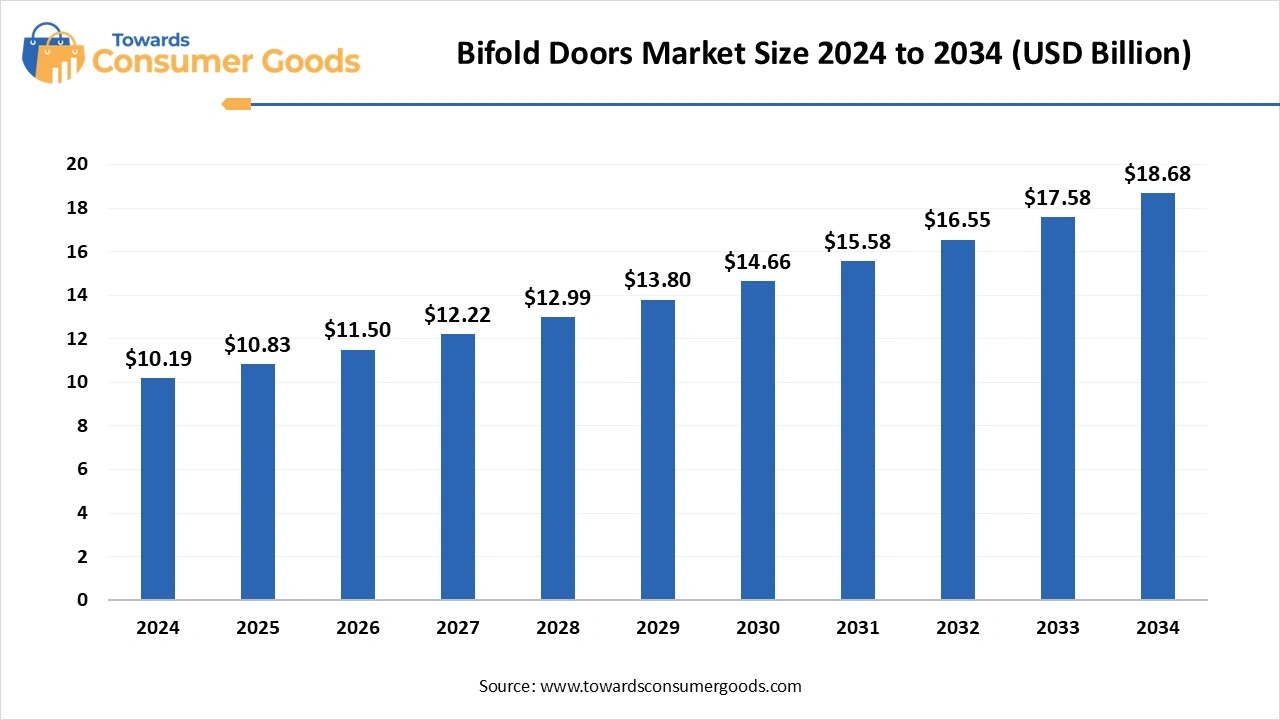
The global bifold doors market has witnessed significant growth in recent years due to various trends, including rising demand for open-plan doors, aesthetic appeal, and seamless transition doors. The increased disposable income and interest in home décor have shifted consumer demand for premium doors, including bifold doors. The adoption of premium and luxury doors has increased in the residential and commercial sectors, for more natural light and seamless transition between indoor and outdoor spaces. The rising urbanization, construction activities, and consumer preference for smart and sustainable doors, fostering innovation and the adoption of bifold doors.
| Report Attributes | Details |
| Market Size in 2025 | USD 10.83 Billion |
| Expected Market by 2034 | USD 18.68 Billion |
| Growth Rate from 2025 to 2034 | CAGR 6.25% |
| Base Year of Estimation | 2024 |
| Forecast Period | 2025 - 2034 |
| Dominant Region | North America |
| Segment Covered | By Material, By Operation Type, By Application, By Region |
| Key Companies Profiled | Andersen Corporation, Kloeber UK Ltd. , JELD-WEN Inc., Nana Wall Systems Inc., Pella Corporation , VEKA AG, AG Millworks, Steves & Sons Doors, Marvin Windows and Doors, Euramax Solutions Ltd, Origin Frames Ltd., |
The global bifold doors market has capitalized on a rising trend for customized and aesthetic design, material, and finishes of bifold doors. Consumers have increased demand for customized and aesthetic doors for enhancing their indoor living experiences, aligning with outdoor space scenarios. The rising demand for aesthetic and sustainable doors highlights aspects for manufacturers. Manufacturers are focusing on using high-quality and natural materials to meet sustainable aspects. Additionally, the development of high-end bifold doors with cutting-edge features and premium materials is fostering market competition. Consumer preference for customization and aesthetic appeal is increasing, and so increasing innovative approaches in the development process.
Installation of bifold doors is complex, as they need precise installation for smooth function. This complexity requires hiring professionals. Additionally, the intricate nature of the bifold door system can lead to errors in installation. The installation complexity leads to high cost, making doors more expensive for cost-conscious customers. However, the simplified installation process and clear installation guidelines can help to reduce this complexity.
North America Bifold Doors Market & Trends
The North America bifold doors market size was valued at USD 3.88 billion in 2024 and is expected to be worth around USD 7.13 billion by 2034, exhibiting a compound annual growth rate (CAGR) of 6.27% over the forecast period 2025 to 2034. North America dominated the global bifold doors market due to the region's strong construction sector, driving demand for bifold doors. The growing trend for indoor-outdoor living spaces and modern architectural designs is fostering the regional market. Consumers in North America have shifted their preference toward energy-efficient bifold doors. The region is a major consumer of aluminum material-based bifold doors.
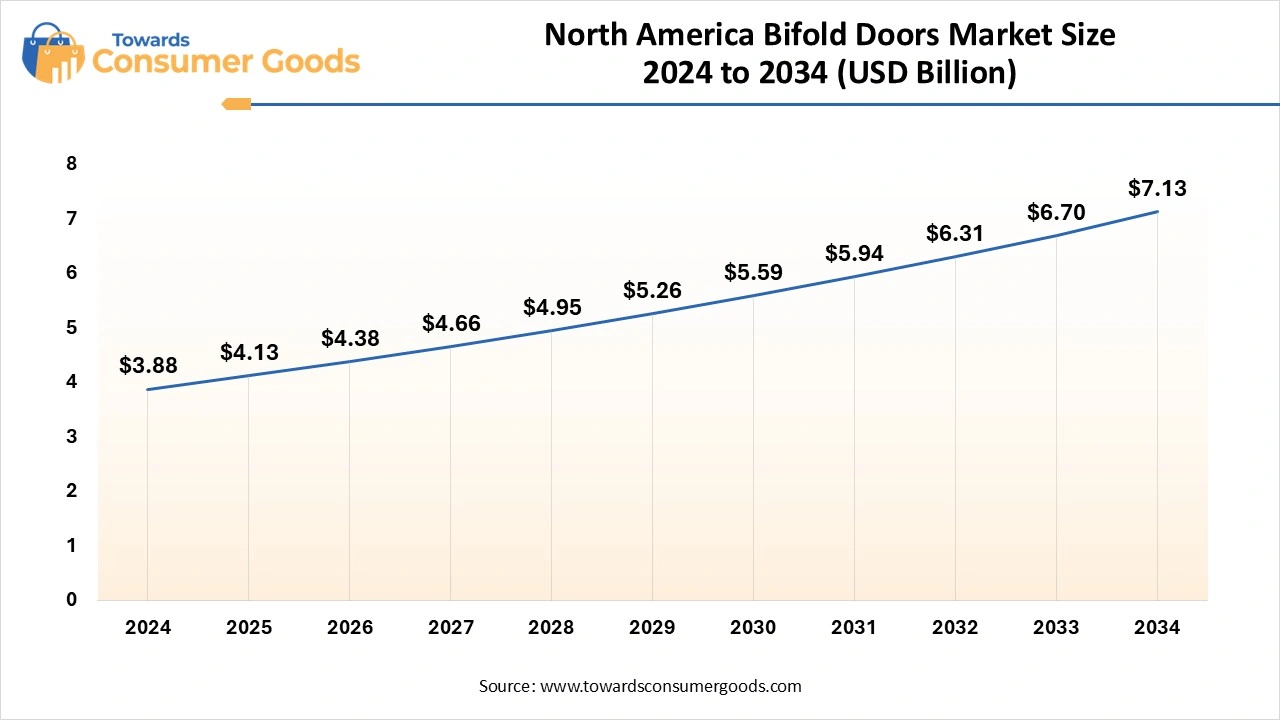
Which Country Leads the North American Bifold Doors Market?
The U.S. is the major leader in the North American bifold doors market, growth driven by increased adoption of bifold doors in the residential sector. U.S. consumers, particularly from urban areas, have increased adoption of bifold doors for their homes. Additionally, the market has witnessed rapid growth in demand for modern architectural designs, making bifold doors more appealing for homeowners. Additionally, the presence of key market vendors, enabling access to premium and smart yet sustainable bifold doors, contributes to the market growth.
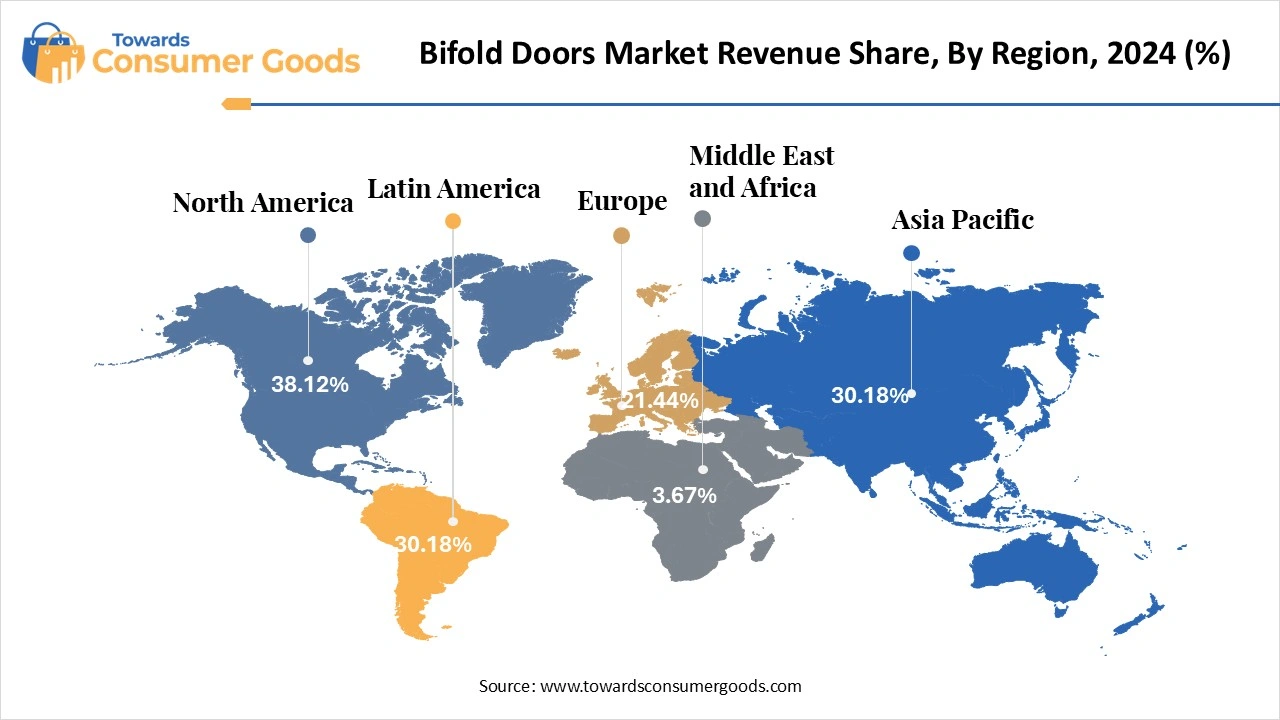
Rapid Urbanization: To Boost the Asian Bifold Doors Market
Asia Pacific is anticipated to witness the fastest growth over the forecast period, mainly due to increased urbanization in the region. Countries like China, India, Japan, and South Korea are seeing significant growth in urbanization. A growing middle-class population, robust infrastructure development initiatives, and rising disposable income have increased spending on advanced building aspects, including bifold doors.
Government investment and funding for infrastructure developments, and increased adoption of premium bifold doors. The commercial sector, including hotels, restaurants, and IT companies, is the major adopter of bifold doors in Asia.
China is the major player in the Asian market, with growth driven by increased demand for modern architectural designs, particularly in urban areas. Growing urbanization, a robust construction industry, and government investments in infrastructure development projects are fostering the adoption of advanced and smart bifold doors. Additionally, government initiatives like “Make in China” encourage the development of technologically advanced bifold doors through the country's manufacturers.
The wood segment dominated the market in 2024, due to rising consumer preference for aesthetic and sustainable doors. Bifold doors with wood materials give a traditional look to the living space, making it more aesthetic. Wood materials add warmth and character to the living space. Additionally, the consumer demands for customization become easier to comply with eood materiasl, as they can match with any design, style, and provide flexibility.
The aluminum segment is expected to lead the market in the forecast period due to increased consumer demand for highly durable, flexible, low-maintenance, and lightweight bifold doors. Aluminum bifold doors are durable, flexible, and inherently have high structural strength, allowing wider openings and large panels.
The demand for customized and aesthetic bifold doors has increased the demand for aluminum-based bifold doors. The bifold doors with dark aluminum finishing are the major trend in the market. Aluminum finishing gives an elegant appeal, and classic look with contemporary and generates a warm contrast with neutral interiors.
The manual segment generated the largest market share in 2024, due to its cost-effectiveness and simplicity. The manual bifold doors are affordable compared to automated doors. The majority of consumers prefer simple, highly reliable, and affordable options. The simplicity and fewer technical issues of manual doors make them highly preferred by consumers. The middle-class population is the major consumer of the manual bifold doors.
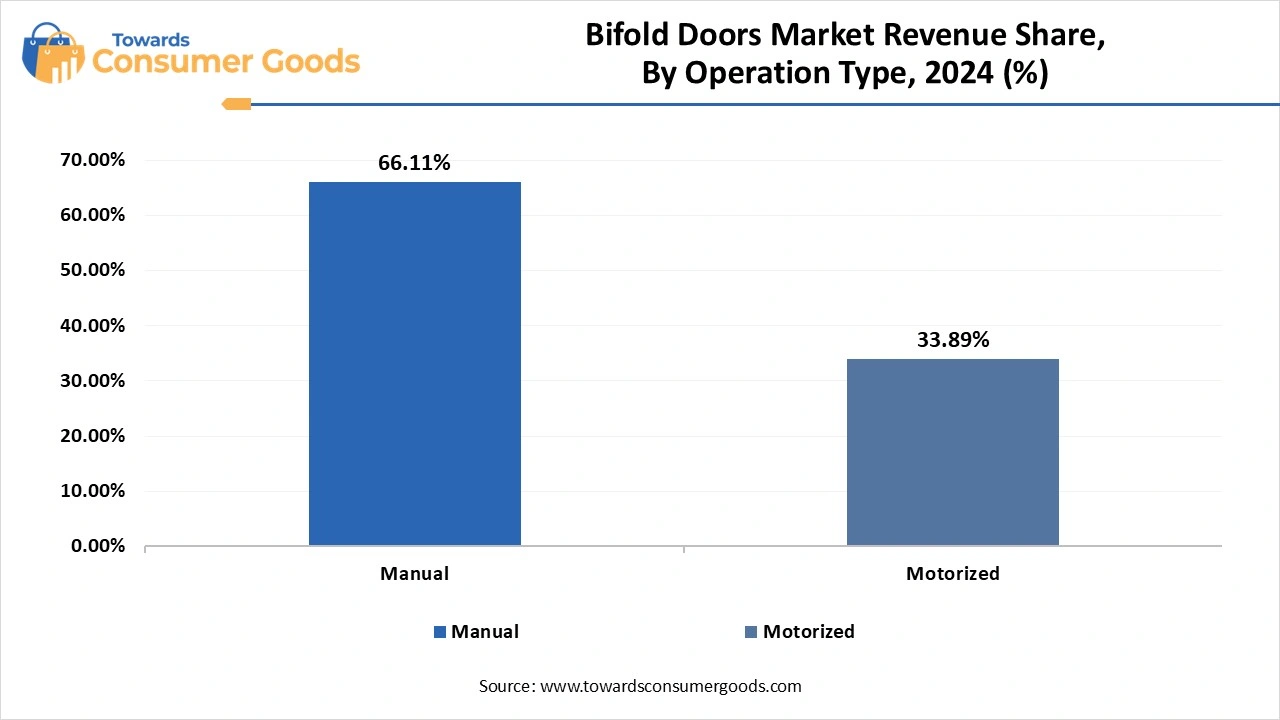
The Motorized segment is the second-largest segment, leading the market. The motorized bifold doors are gaining popularity due to their simplicity, convenience, advanced features, and consumer shift toward smart home integration. Motorized bifold doors are accessible, as they are convenient in high-traffic areas and large scenarios. Ongoing development of automated doors with more energy efficiency, encouraging consumer adoption of motorized bifold doors.
Bifold doors offer a seamless transition between indoor and outdoor spaces, making them ideal for urban homes with limited space. The trend for open-plan living encourages the reduction of unnecessary walls in homes and the adoption of fluid movements between rooms. The aesthetic trend further contributes to the adoption of bifold doors for residential areas.
The commercial segment is anticipated to witness the fastest growth over the forecast period, due to increased sustainable demand in the commercial sector. Commercial areas, including hospitality, retail, hotels, and restaurants, are rising and adopting sustainable practices, contributing to the adoption of bifold doors. The corporate sector is using bifold doors as room dividers, access points, and to create open-plan environments, driven by significant flexibility and modern aesthetics of bifold doors. Additionally, growing green building initiatives are contributing to the adoption of energy-efficient bifold doors.
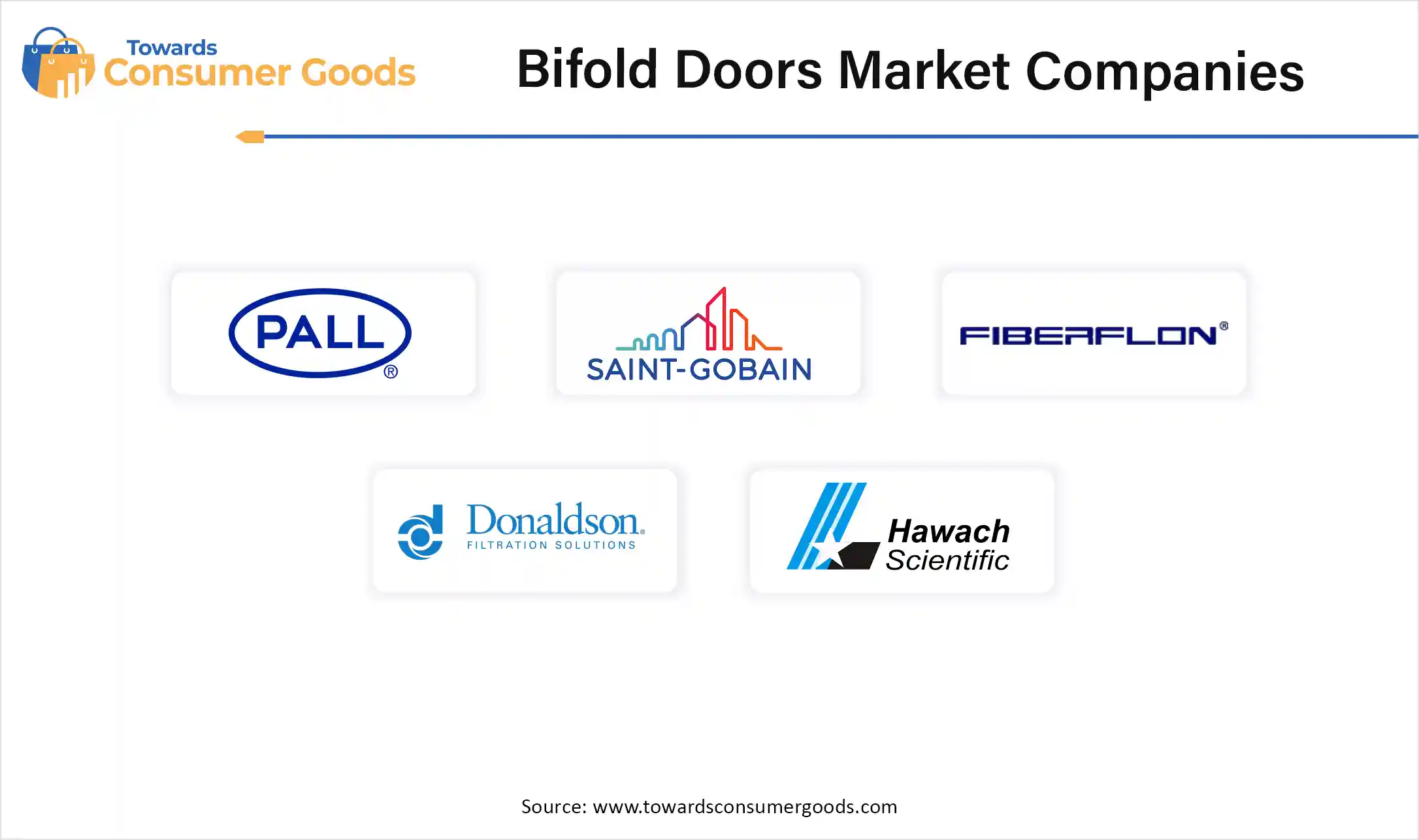
By Material
By Operation Type
By Application
By Region
The U.S. and canada water purifier market size was estimated at USD 6.19 billion in 2024 and is predicted to increase from USD 6.68 billion in 2025 to...
According to latest report, the global pet food market size accounted for USD 107.78 billion in 2024, grew to USD 112.58 billion in 2025, and is expec...
July 2025
July 2025
July 2025
July 2025